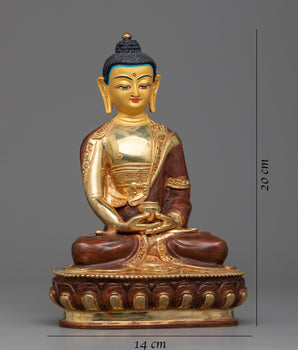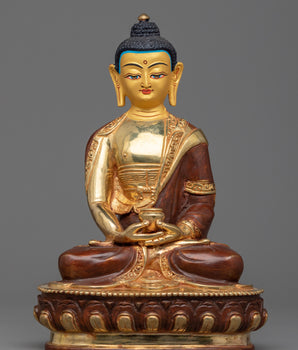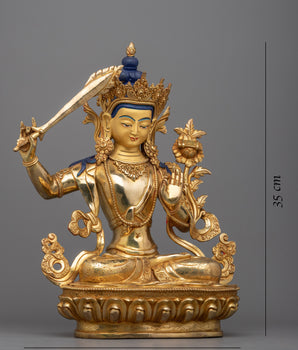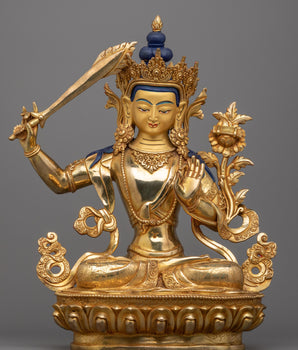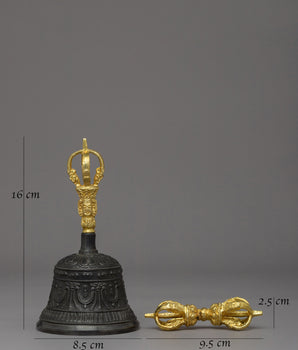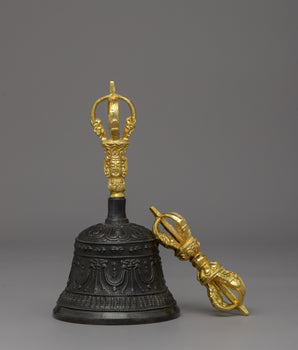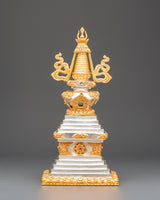
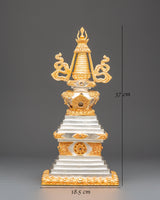
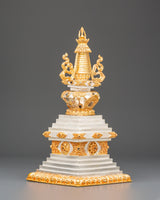
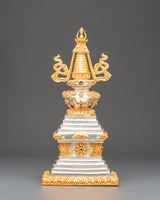
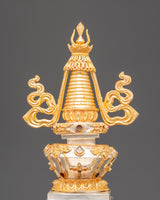
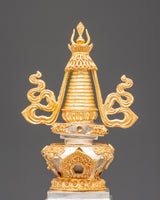
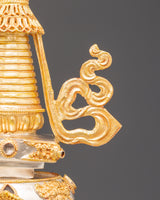
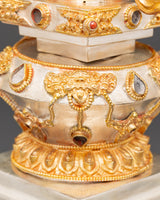
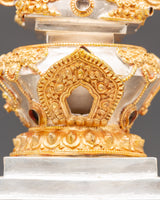
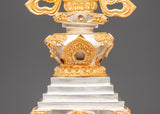
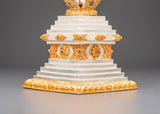
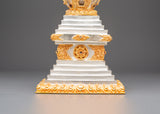
Handmade Stupa for Ritual Ceremonies | Symbol of Enlightenment

100% AUTHENTIC

HANDMADE

FREE SHIPPING
Handmade Stupa for Ritual Ceremonies | Electro Gold and Silver Plated Buddhist Stupa
--------------------------------------------------
Size: 37cm (Height) x 18.5cm (Width)
Weight: 1.50kg
Materials: Copper Body, Electro Gold Plated, Electro Silver Plated
--------------------------------------------------
About Our Ritual Item :
This Handmade Stupa for Ritual Ceremonies is a sacred symbol of enlightenment and one of the most venerated things in Tibetan Buddhism. The stupa, also known as a chorten in Tibetan, symbolizes the Buddha's enlightened mind and serves as a reminder of the way to nirvana. Stupas are traditionally put in monasteries, temples, and meditation areas to spread blessings, purge negativity, and promote spiritual growth.
This stupa, expertly created from a copper body with electro gold and silver plating, stands 37cm tall, 18.5cm wide, and weighs 1.50 kilograms. The structure's intricately crafted levels represent the five elements (earth, water, fire, air, and space), while the lotus base and flame-like decorations add to its spiritual connotation. The bright gold and silver finish enhances the sacred design, making it both a spiritual item and a stunning example of Himalayan artistry.
In Tibetan Buddhist practice, the ritual stupa serves as both a potent object of adoration and a focus for meditation and offerings. It embodies the essence of enlightenment and serves as a reminder to practitioners of the fleeting nature of life and the importance of seeking insight. Whether put on an altar, utilized in ceremonies, or displayed as a collector's item, this handmade stupa has significant cultural and spiritual importance, benefiting and inspiring those around it.
Introduction To Stupa :
Before Buddhism, great teachers were buried in mounds. Some were cremated, but sometimes they were buried in a seated, meditative position. The mound of earth covered them up. Thus, the domed shape of the stupa came to represent a person seated in meditation, much as the Buddha was when he achieved Enlightenment and knowledge of the Four Noble Truths. The base of the stupa represents his crossed legs as he sat in a meditative pose. The middle portion is the Buddha’s body, and the top of the mound, where a pole rises from the apex surrounded by a small fence, represents his head. Before images of the human Buddha were created, reliefs often depicted practitioners demonstrating devotion to a stupa.
How to Set Up Your Own Buddhist Shrine?
• Find a clean, quiet, and uncluttered spot
• Set up an altar table, and cover it with an altar cloth that calls to you
• Place your sacred item at the center
• If you want a more elaborate altar, you can put a Stupa as well.

















